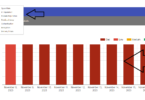Safer City Planning Guide line in point to point break up For Urban Development of new areas. As a part of its EMBARQ Sustainable Urban Mobility initiative, the WRI Ross Center for Sustainable Cities has created a global reference guide called Cities Safer by Design.“To help cities save lives from traffic fatalities through improved street design and smart urban development.” Causing over 1.24 million deaths annually, traffic fatalities are currently estimated to be the eighth leading cause of death worldwide, a ranking that is expected to rise to the fifth leading cause of death by 2030.
City Planning: Make City Safer By Design

Urban city town planning concepts:
With these City Planning staggering numbers in mind, the Cities Safer by Design guide discusses ways to make cities less dangerous, particularly with its section entitled, Learn what the City Planning concepts are, after the break.
- Avoid Urban Sprawl
- Slow down road traffic
- Ensure main streets are safe for everyone, not just cars.
- Create dedicated spaces for pedestrians.
- Provide a safe, connected network for cyclists.
- Ensure safe access to high-quality public transport.
- Use data to detect problem areas.
For an in-depth explanation of each principle check out the WRI’s “7 Proven Principles for Designing a Safer City” here and their full guide “Cities Safer by Design” here.
Let’s Explore some more point on the make city planning on the way to design safer city.
- Don’t think like a city planner, architect or engineer. Think like a citizen.
- Architects, quit complaining about rules!
- Make walking (and biking) irresistible.
- Small, tight streets work great, and so do wide streets, if designed right.
- Tall buildings aren’t evil – but don’t put them just anywhere.
- Strengthening Community Policy
- Protecting Children
- Focus on Needs
- Harness the Power of the Crowd
According to a new report by the Urban Land Institute:
- 38% of respondents said their communities lack outdoor places for recreation
- 54% said shopping and entertainment are not within walking distance
- 48% said bike lanes are insufficient to make biking a practical mode of transportation
- 25% said traffic makes it unsafe to walk in their neighborhoods
- 21% said crime makes it unsafe to walk in their communities
Re-shaping the landscape:
- Interagency communication and collaboration on a massive scale.
- Interoperability of systems and technologies (open ended platforms / solutions).
- Limited budget for technology solutions.
- Accessing real time information, big data collection & use of paralytics on a secure architecture to have situational awareness.
- Time taken to respond to a situation.
Know More Urban Planning,
- Urban Planning Exhibition Center by Playze and Schmidhuber for Ningbo, China.
- Is Navi Mumbai Urban Spaces Fulfill Charles Correa’s Dream?
- Affordable Housing – Why People can’t buy own Home in Urban Areas???
- Modern Architecture Style – Simplicity and Clarity of Architecture
- Is Property Price Affect By Modern Transit and Highways ?
- Best Architecture Colleges In India : Become An Architect Of Tomorrow.







Leave a Comment
You must be logged in to post a comment.